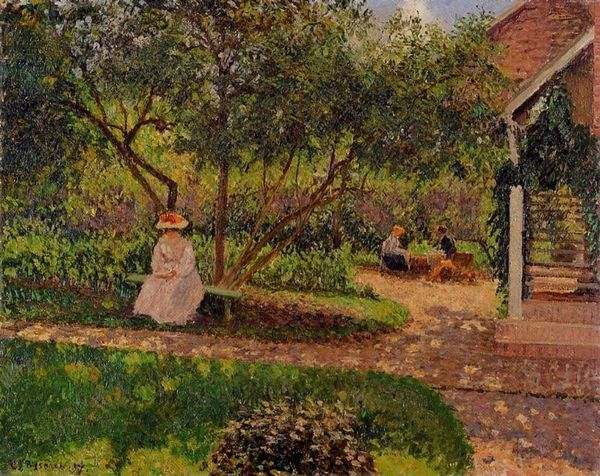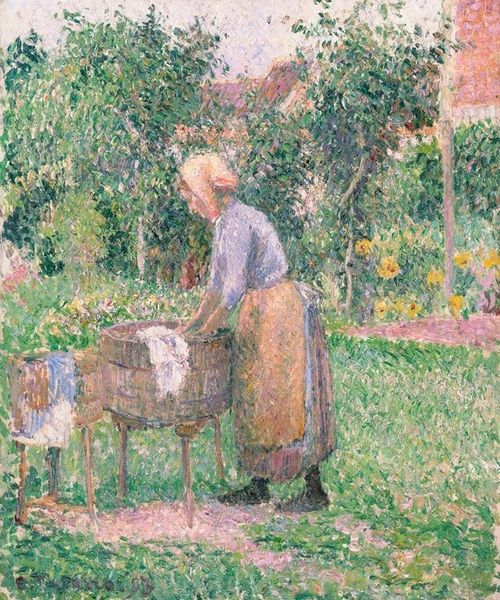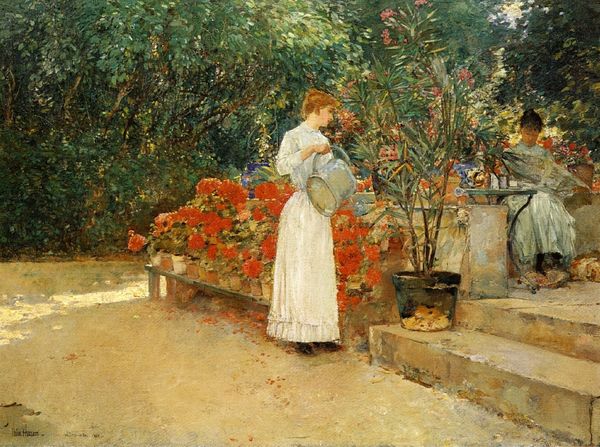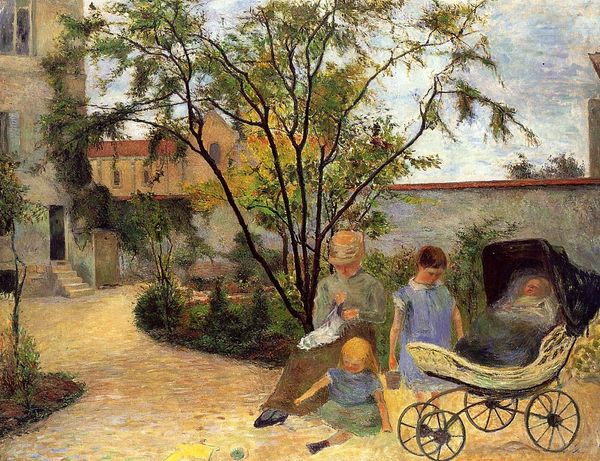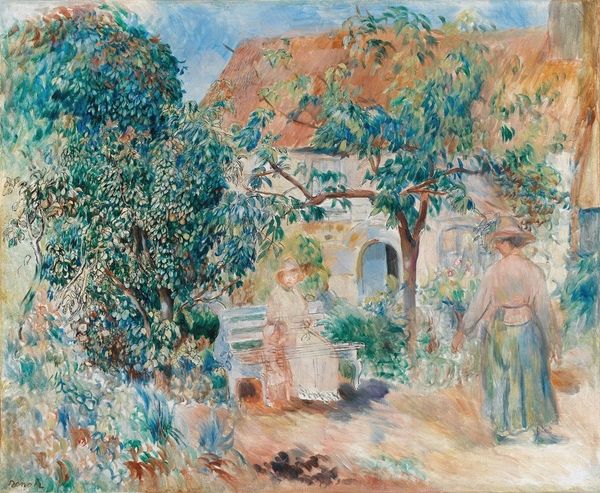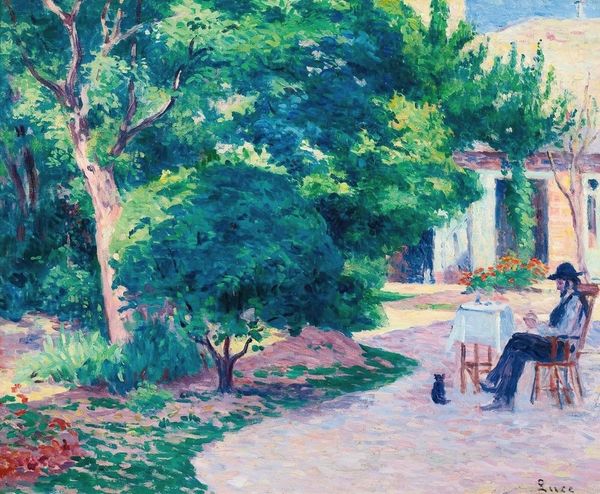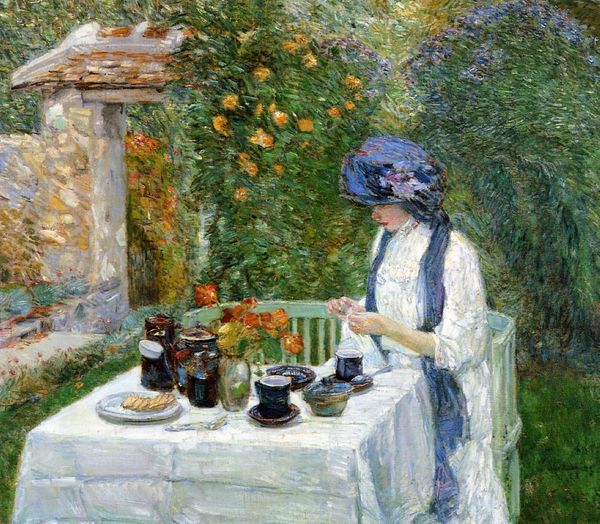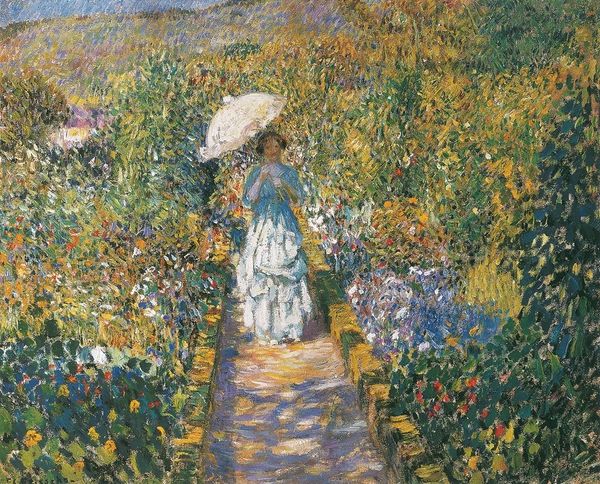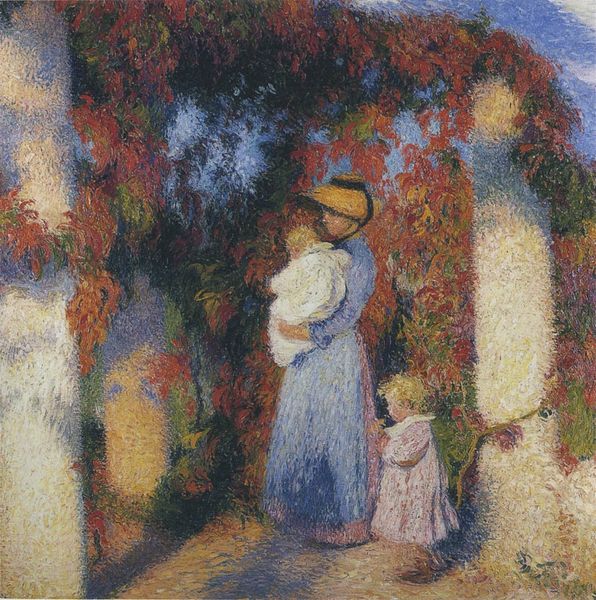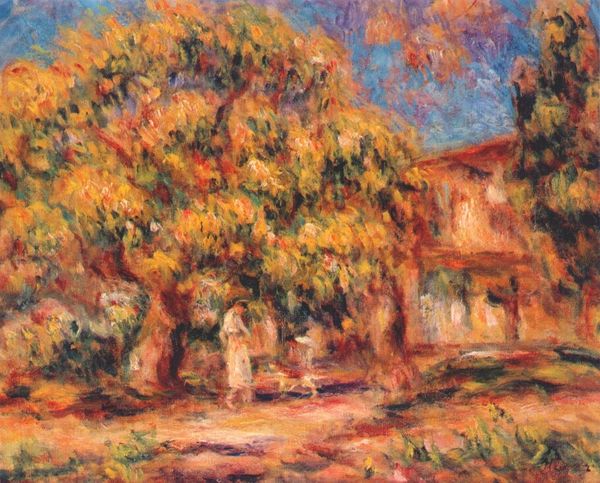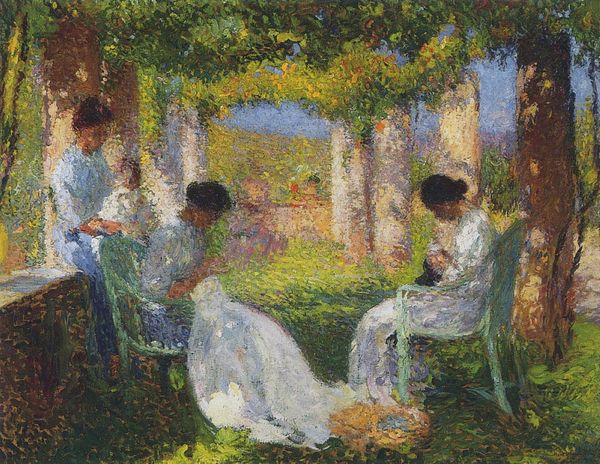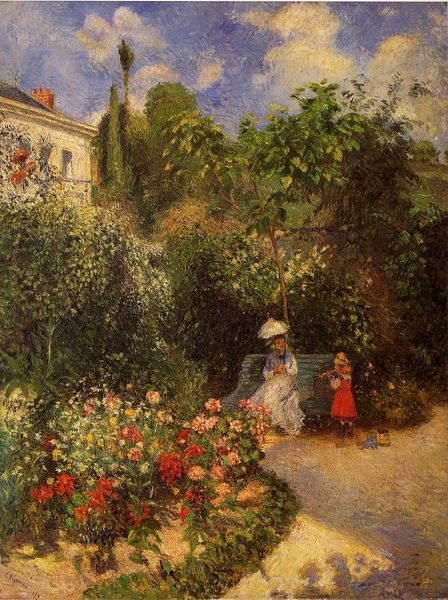
painting, plein-air, oil-paint
#
painting
#
impressionism
#
plein-air
#
oil-paint
#
landscape
#
impressionist landscape
#
figuration
#
oil painting
#
genre-painting
Copyright: Public Domain: Artvee
Curator: Renoir's "In Brittany," created in 1886, offers a glimpse into rural life through his distinctive impressionistic lens. Painted en plein air with oil paints, it beautifully captures a moment in a cottage garden. Editor: It's luminous! The way the light filters through the leaves is almost tangible, and the figures seem so relaxed, enveloped in the warmth of a summer afternoon. Curator: What's fascinating is Renoir’s commitment to portraying modern life but set in these very specific rural locations. It's important to recognize that Brittany at this time was seen as almost another world; the paintings he and other artists created became tied to how urban Parisians perceived rural dwellers, and in what contexts. The figure’s attire seems almost more generic “peasant” than a typical dress from the area. Editor: You raise a crucial point. There's the reality of Breton life and then there's the idealized image, and artists certainly participated in the production of these types. We can even see it in how he manipulates the oil paint here. See those short, broken brushstrokes. He emphasizes light and color over precise details, maybe creating a certain timelessness—or erasing other visual signifiers and lived experience. What do you think about this? Curator: That seems a valid take, considering his earlier work in Parisian settings. Think about how differently his patrons may have encountered images of the Breton area vs paintings from other social contexts. It definitely affected his marketing position with galleries and exhibition spaces. These are the key social contexts of making and distributing art in this period. Editor: The composition itself reinforces this idea of domesticity; figures contained within this small garden, away from industrial or metropolitan landscapes that were simultaneously transforming Europe. Curator: Exactly. And looking closely, you notice the materiality of everything: the rough stone of the cottage, the texture of the woven basket, the flow of fabric of the clothing; labor and materials are very present here. Renoir calls our attention to both artistic and social production here. Editor: I think this artwork leaves me with a deeper understanding of Impressionism's capacity not just to capture a scene, but also to carefully construct perspectives about its social reality. Curator: I'm glad that this dialogue has opened more doors than it closed. This has made me curious to do further research into what Breton women specifically wore at that time.
Comments
No comments
Be the first to comment and join the conversation on the ultimate creative platform.
